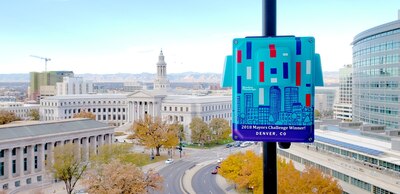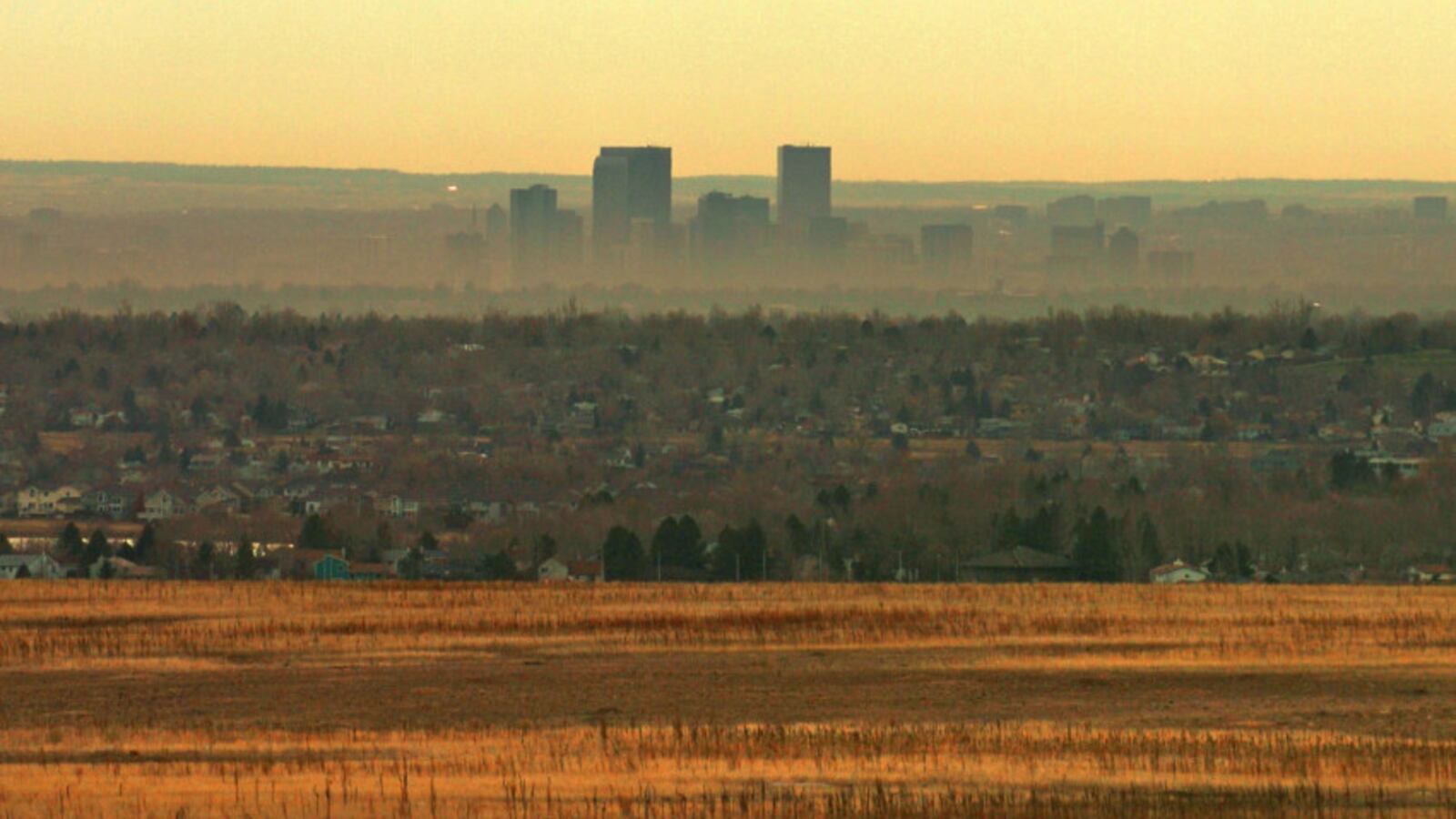Of the 10 Denver schools with the highest asthma rates — including one campus with rates more than triple the district average — just one will participate in a new air quality monitoring pilot program to be launched next month. One goal of this program is to help school nurses identify asthma triggers and then develop individual health plans for students who have the chronic breathing condition.
Funded in part by a $1 million Bloomberg Foundation grant awarded to the city of Denver, city officials are working to install air quality sensors at 10 schools before school begins in mid-August. An additional 30 sensors are slated to be distributed around the city by 2021.
To read more about the new air quality sensor program at public schools, click here.
In the course of reporting on the air quality monitoring program, Chalkbeat obtained asthma rates for all Denver schools through an open records request, and we’re making this data publicly available for the first time here.
Asthma affects some 10,000 Denver public school students. Researchers say it can be caused by chronic exposure to air pollution, among other factors.
Prep Academy, in the City Park neighborhood, has one of the top 10 highest asthma rates of the 222 schools in the district, at more than 20% — compared to 11% districtwide and 8.3% nationwide — and is the only school of the bunch that is receiving a sensor this year. Another school with one of the highest asthma rates, Manual High School, with a student asthma rate of 21%, has signed up to receive a sensor at a later date.
The eight other schools with the highest asthma rates in the district are not participating in the program. They are: Contemporary Learning Academy High School, with an asthma rate of 34%, Compassion Road Academy, with a rate of 27%, the Boys School of Denver, at 23%, and Montbello Career and Technical High School, Colorado High School Charter, and Summit Academy Middle School, all with a student asthma rate of 22%, as well as Hallett Academy at 21%, and Columbine Elementary at 20%.
There are seven other charter schools with such small enrollment that the district gave the asthma rate as just “greater than 20%” to protect student privacy. So far, none of those schools are slated to participate in the sensor program either.
Most of the schools with the highest asthma rates are charter schools. But in a district like Denver, where students can go to any school of their choice, regardless of where they live, the asthma rates may not be entirely indicative of conditions specific to the school’s locations. Experts explain students could be exposed to hazardous air conditions at home, as well, and children from lower-income families are more likely to be diagnosed.
The schools with the lowest rates, at only 4%, are Carson Elementary School and Steck Elementary School, both located in the affluent Hilltop neighborhood in southeast Denver, and Westerly Creek Elementary, located in Stapleton. To find out your school’s asthma rate, check out the search bar at the bottom of this page.
The city is spearheading the project, but it has worked closely with Denver Public Schools to find principals willing to participate in the pilot. Asked why most of the schools with the highest asthma rates weren’t signed up to receive sensors yet, district officials said, “a great deal of outreach was done to get participation in the pilot phase,” but ultimately it was up to school principals to decide whether or not to join.
Chalkbeat reached out to those eight schools for comment, but only heard back from one of them, The Boys School of Denver. Its principal, Darion Bennett, said he had not been contacted about the program, but that his school has recently changed locations, and is hoping to move again in a year, which could make it difficult to have a sensor installed.
“Now that I know about the program, I’d definitely be willing to do it,” said Bennett. “I think it’s important to have great air quality in an educational environment.”
District leaders hope new data coming from the 10 schools with sensors this year will encourage other schools to sign up, as well, as the district has not yet determined which 30 schools will be next to receive the sensors in the coming years.
“We hope that as the message about this program gets out, and can show measurable impacts, it will not be a problem to get school participation,” said Anna Alejo, a school district spokesperson.

As the sensors begin to monitor the outdoor air quality on school campuses this fall, school nurses plan to collect inhaler usage information to bolster the data the sensors gather. Doing so, school officials say, can help nurses better understand air pollution levels that trigger asthma attacks. Armed with this data, they may recommend some students stay inside on high-pollution days or receive breathing treatments before recess.
At the 10 participating schools, real-time results of the sensors will be on a big-screen display on campus, which will give students and staff a greater awareness of the site’s air quality conditions.
District officials said they plan to work with each of the 10 schools to develop an “extraordinary event plan,” to give schools guidance on what to do when the results are showing unsafe outside air quality, such as when nearby wildfires cause thick smoke that can be irritating to the eyes and lungs. But it will be up to each individual principal whether they adhere to the district’s recommendations.
To find out your school’s asthma rate and if it is participating in the air quality monitoring program, type your school’s name in the search bar below. If your school is listed as “not planned,” that means your school has not signed up to receive an air quality sensor yet. Leaders are encouraging school communities wishing to participate in the program to let their principal know.
Look up your school here
Data source: Denver Public Schools, City of Denver Department of Public Health and Environment


